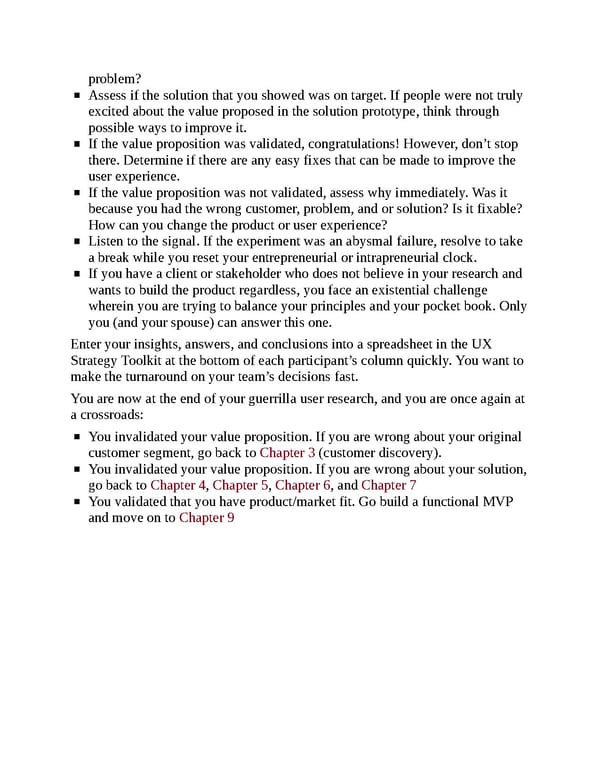problem? Assess if the solution that you showed was on target. If people were not truly excited about the value proposed in the solution prototype, think through possible ways to improve it. If the value proposition was validated, congratulations! However, don’t stop there. Determine if there are any easy fixes that can be made to improve the user experience. If the value proposition was not validated, assess why immediately. Was it because you had the wrong customer, problem, and or solution? Is it fixable? How can you change the product or user experience? Listen to the signal. If the experiment was an abysmal failure, resolve to take a break while you reset your entrepreneurial or intrapreneurial clock. If you have a client or stakeholder who does not believe in your research and wants to build the product regardless, you face an existential challenge wherein you are trying to balance your principles and your pocket book. Only you (and your spouse) can answer this one. Enter your insights, answers, and conclusions into a spreadsheet in the UX Strategy Toolkit at the bottom of each participant’s column quickly. You want to make the turnaround on your team’s decisions fast. You are now at the end of your guerrilla user research, and you are once again at a crossroads: You invalidated your value proposition. If you are wrong about your original customer segment, go back to Chapter 3 (customer discovery). You invalidated your value proposition. If you are wrong about your solution, go back to Chapter 4, Chapter 5, Chapter 6, and Chapter 7 You validated that you have product/market fit. Go build a functional MVP and move on to Chapter 9
 UX Strategy: How to Devise Innovative Digital Products that People Want Page 239 Page 241
UX Strategy: How to Devise Innovative Digital Products that People Want Page 239 Page 241